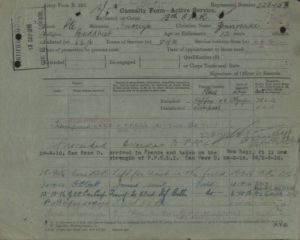This year marks the 25th anniversary of when Canada, Mexico and the United States gathered to sign the North American Free Trade Agreement (NAFTA)—a policy that allowed the three countries to increase the movement of imports and exports between their borders by limiting tariffs.
In the fall of 1992, the leaders of the signatory nations addressed the press as they stood side-by-side each behind their own podium. The outdoor ceremony took place in San Antonio, Texas. It marked the symbolic agreement between the nations before their respective governments would go on to pass formal legislation enacting the largest free trade agreement at the time.
Before NAFTA, the nation’s free trade agreement with the U.S. had only been in place since 1989. Canada was experiencing tough economic times under this policy so the public was weary of expanding the trade agreement to include Mexico.
Former Prime Minister Brian Mulroney can be found in archival CBC footage saying, “…everyone said you can’t sell free trade to the Canadian people. No? You just watch and see.” His defensive attitude reflects the mounting disapproval his leadership was facing.
http://www.cbc.ca/player/play/812408899915/
NAFTA deal reached in 1992, CBC Archival Footage
The Canadian think tank, Centre for International Governance Innovation analyzed the last couple decades of NAFTA in a report written by Hugo Perezcano, a legal expert in international trade and negotiations. He says each country’s goal was to generate economic growth by increasing the flow of trade and investment. Meanwhile, Canada’s specific goal was to improve its pre-existing trade deal with the U.S. by gaining direct access to the Mexican market.
Experts like Perezcano say there’s no doubt Canada achieved its goal of increasing trade and investment flows. According to the 2015 report, imports into Mexico increased almost 407 per cent, going from $78.2 billion to $396.5 billion.
Mulroney credits the two trade agreements ushered in by his government for “much of the prosperity and many of the jobs Canada has enjoyed over the last 25 years.” In a video posted last February from FarmTech, an annual farming conference held in Edmonton, the former Conservative Party leader continued by saying, “it’s been the foundational policy of Canada’s economy and it has reoriented the economy internationally.”
Mulroney being interviewed at FarmTech, February 2017
His present-day sentiments can amount to a political “I told you so.” During his time as leader he was unable to gain public after the massive failure of the Charlottetown accord in the summer of 1992. A few months after the San Antonio ceremony that fall, a Gallup poll revealed that a combined 43 per cent of Canadians felt he was either the worst or one of the worst prime ministers. Eventually, he’d step down as leader before the next election took place.
Although NAFTA has seen success, the government lists “increased border security and delays at the border as one of the most challenging aspects of Canadian trade policy” in a preliminary trade and economic analysis report. The challenges of border security are echoed in Perezcano’s report.
The current issue facing NAFTA members is how they will move beyond their 1994 deal to accommodate their modern challenges. While Perezcano’s report details the extensive gains each country has made it also points out the 25-year-old agreement is due for an update.
U.S. president Donald Trump has raised eyebrows and speculation by his advocacy of NAFTA renegotiations. It’s unclear what terms he is trying to change. However, considering his hostility with the Mexican president it’s unlikely that all three leaders will be found standing side-by-side at a podium in celebration anytime soon.
Documentation Notes:
https://www.cigionline.org/sites/default/files/cigi_paper_68_0.pdf
-This is the report on NAFTA by the Centre for International Governance Innovation. I found it on the organization’s website. It’s where I drew the information for most of my expert analysis and stats.
-This is a report by the government of Canada. I found it through as an archived site through a google search. It provided information on how tightening U.S. border security was negatively effecting the Canadian economy.
http://www.cbc.ca/archives/entry/nafta-deal-reached-in-1992
-This archival CBC news coverage of NAFTA from 1992 helped form an understanding of how Canadians viewed NAFTA at the time. It also provided the context for Mulroney’s defensiveness on gaining public support. I found it on the web through a google video search of NAFTA 1992.
https://www.c-span.org/video/?c4543970/nafta
-This video of the ceremony celebrating the NAFTA agreement provided the context for the anniversary portion of the article. I found it on the web through a google video search of NAFTA 1992.
https://www.youtube.com/watch?v=6DmEMlPbDSQ
-This current CBC current affairs coverage helped provide a Canadian perspective on Trump’s comments regarding NAFTA. I found it on YouTube through a search on NAFTA.
FarmTech-Canada’s premier crop production and farm management conference. Jan 31-Feb 2 in Edmonton, Alberta:
https://www.youtube.com/watch?v=eJg9bFY9ikQ –
-This video helped me get this clip on Mulroney’s current perspective on NAFTA. It’s from a farming conference that took place earlier this year I found it on the web through a YouTube search of Mulroney 2017.
“Free trade agreements have been responsible for much of prosperity and many of the jobs Canada has enjoyed over the last 25 years. It’s been the foundational policy of Canada’s economy and it has reoriented the economy internationally.”- Brian Mulroney

















